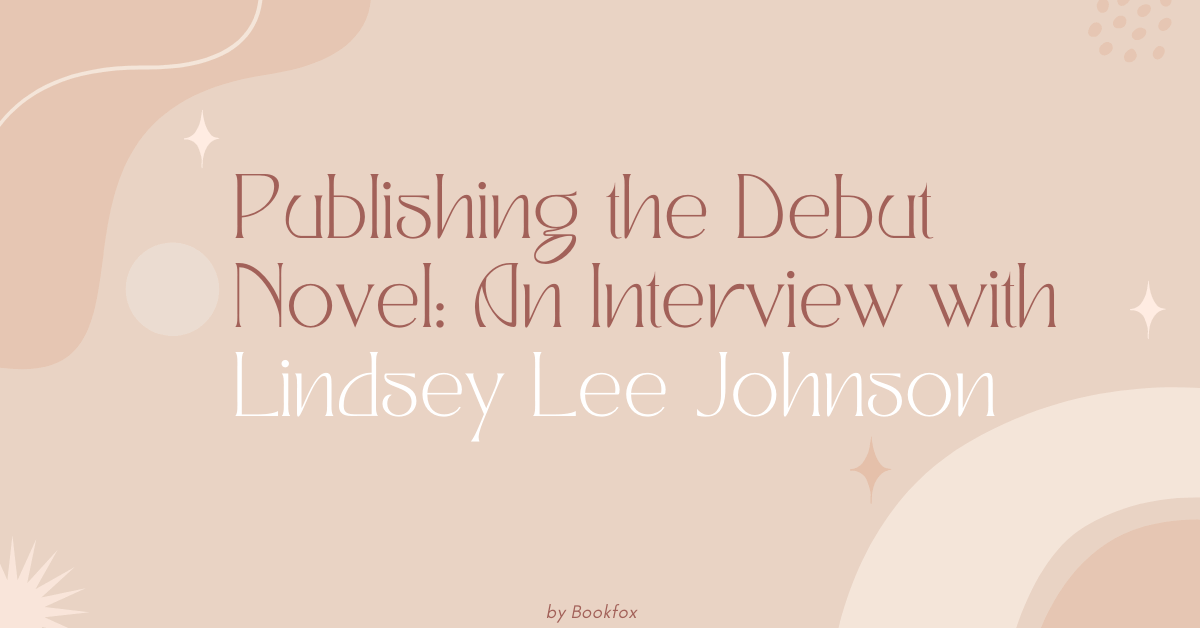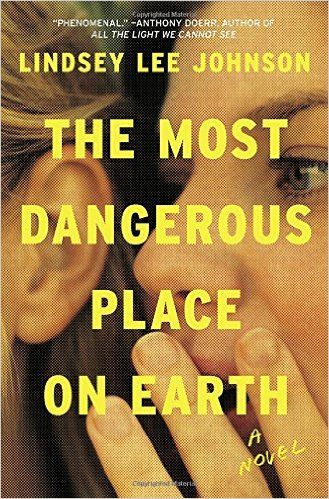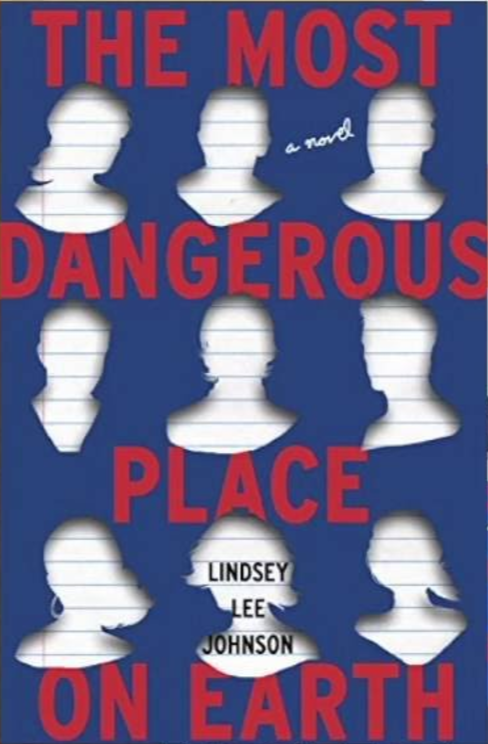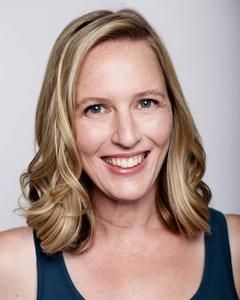
 If you want to learn how to publish your first novel, and if you want to pick up some key writing tips along the way, keep reading.
If you want to learn how to publish your first novel, and if you want to pick up some key writing tips along the way, keep reading.
This is an interview with Lindsey Lee Johnson, whose debut novel The Most Dangerous Place on Earth is getting rave reviews from the likes of:
- New York Times
- Publisher’s Weekly
- GQ Magazine
- Book of the Month (Sarah Weinman picked it as the January selection).
What is the most dangerous place on earth, you ask? Spoiler alert: It’s high school.
The novel follows a cast of high school characters (and some teachers) in the aftermath of a cyberbullying incident.
I loved reading it, and thought it perfectly captured the feelings of high school — the parties, the wild emotions, the fears. There’s a student just out of rehab tempted by alcohol at parties, an Ivy-league aspirant who makes the terrible decision to sleep with her teacher, and an idealistic teacher who tries too hard to help her students.
Here is the Bookfox interview with Lindsey Lee Johnson:
 BF: That epic party scene in the middle of the book perfectly evokes the feeling of a high school party. How do you juggle a chaotic scene with such a large cast of characters?
BF: That epic party scene in the middle of the book perfectly evokes the feeling of a high school party. How do you juggle a chaotic scene with such a large cast of characters?
LLJ: Thank you! The party scene was a challenge, for exactly the reason you describe. Let me start by saying that there were many drafts.
One thing that helped was placing the scene inside a very firm point of view to begin with. By describing the action from the perspective of Elisabeth, the girl who throws the party and is by nature a painfully shy observer, I could lay out the basic framework for readers: where things were positioned generally, what was happening generally, who was there.
Then, when I moved into the POV of Damon, my sensitive juvenile delinquent, I could focus on small moments, like when he struggles not to drink the beer he’s holding because he’s just returned from rehab. Everything is driven by character.
BF: The structure of your book–with chapters cycling through different character POVs– reminds me of a closely linked short story collection. What was your process coming up with this structure? Did you flirt with other structures before settling on this one?
LLJ: Strangely enough, the structure of the novel was clear to me from the outset. This had not been my experience with novel manuscripts in the past.
 I always thought of the novel as one entity, never as individual short stories. I knew I wanted to write about a group of teenagers who had been complicit in this tragic cyberbullying event in eighth grade and then had to go on with their lives afterward.
I always thought of the novel as one entity, never as individual short stories. I knew I wanted to write about a group of teenagers who had been complicit in this tragic cyberbullying event in eighth grade and then had to go on with their lives afterward.
To create the kids, I began with a list of teenage archetypes that I’d seen over and over in pop culture—the pretty-boy jock; the beautiful, unattainable blonde; the scam artist; the stressed-out nerd. Then I gave each of the characters a problem. From that point, I thought of the kids’ stories as a game of dominoes: each one caused the next story to happen, and on and on until the end. Then I created the teacher character, Molly, to layer over the kids’ stories and to provide a resting point for adult readers between each teen POV.
While writing, I was inspired by books like Jennifer Egan’s A VISIT FROM THE GOON SQUAD, Elizabeth Strout’s OLIVE KITTERIDGE, and Tom Rachman’s THE IMPERFECTIONISTS, each of which describes a whole community by drawing on a chorus of individual voices.
BF: Even though the book’s in 3rd person limited, the prose changes based on the character. How did you work on differentiating each character’s voice and style?
LLJ: A lot of this was subconscious, I think. I was, again, very driven by character, and being solid in each teen’s point of view made it easier to choose the words they’d use to describe certain things.
For example, Abigail, the rich and fashionable overachiever, always notices clothing brands: she sees that the principal wears Naturalizer pumps while her own mother has Ferragamo. A character like Ryan (the jock) would never even be aware of such things, so I wouldn’t use brand names in his chapter. But he would know every detail about his new baseball glove.
The one character who was most distinct in terms of voice was Damon, the juvenile delinquent, whose chapter I actually wrote in first person and then changed to close third while editing. That was the most fun.
 BF: I loved the way The Most Dangerous Place on Earth portrayed teens. What advice would you give to writers working on high school characters?
BF: I loved the way The Most Dangerous Place on Earth portrayed teens. What advice would you give to writers working on high school characters?
LLJ: I’ve taught freshmen at USC, and also at several community colleges. Then I was a tutor at a private learning center in my hometown in Marin County, California, on and off for about four years. So the voices of teenagers were loud in my head–their energy, and the way they talk, and the facades they construct that pretty quickly come down once they trust you. I did not have any particular kids in mind when I started to write the book, but in my head I heard the rhythms of their speech as well as the kinds of very urgent problems they were facing on a daily basis. Also, spending time with kids was helpful because it helped me to remember with more accuracy how I had felt as a teenager–the awkwardness, the intense self-consciousness and the yearning for things I couldn’t articulate. (To be seen, probably, and understood.)
Specific advice about writing teenagers? Spend time with them. Remember that they don’t think of themselves as children, but they are. Be present for them even when they are making terrible mistakes. Remember that many kids make terrible mistakes and come out fine. Don’t judge your teenage characters while you are writing them. Fiction doesn’t have to teach a moral lesson, it just has to show what is.
BF: What did you edit out of this book?
LLJ: I edit a lot, but mostly on the sentence level. I read everything out loud, often recording my own reading into my phone and then listening back to it. I’m always looking for things to cut. I love that William Zinsser quote: “Writing improves in direct ratio to the number of things we can keep out of it that shouldn’t be there.”
In terms of developmental editing, Molly had the most work. I wrote and cut at least a hundred pages of Molly material. It was a matter of deciding how much she would actually become involved in her students’ lives, how far across the line she would go.
BF: Does writing energize or exhaust you?
LLJ: It exhausts me, but I’m miserable without it. Miserable to be around, I mean. Writing is my way of coping with life. Being a novelist allows me to be both in the world and out of the world, which is, frankly, what I need.
BF: What is your writing kryptonite?
LLJ: Dialogue. Every high-conflict dialogue scene you read in this book I rewrote at least ten or fifteen times. For the first ten years of my writing career, I could not pull it off at all. I was always making characters run out of the room as soon as someone raised his voice.
BF: When you write, do you focus on what gives pleasure to you or what will give pleasure to the reader?
LLJ: The first draft exists so that I can figure out what I’m trying to say. The second draft is a fight to make someone else understand it.
BF: What was the best money you ever spent as a writer?
LLJ: Over the years, I have spent a lot of money buying other writers’ books, especially debut novels, in bookstores. I do this because I love reading, but also because I don’t believe I should ask other people to support my work if I’m not willing to support theirs. (Not to mention, to support the local bookstores that do so much to keep this whole show running.) Long before I became a published author, I was an active and avid participant in the marketplace. I was a fan. I think that’s important.
BF: What does literary success look like to you?
LLJ: Being asked to write another book. Also: the biggest difference between being an “aspiring author” and a published author is that people now take me seriously when I say I write novels. Suddenly, “novelist” is viewed as a legitimate profession, which to me it always was.
As for the writing process itself, it doesn’t change at all. I’m still as sure and as unsure as ever.
BF: Okay, lastly, how did you come up with such a fantastic title?
For a long time, I called the book TEENAGER or THE TEENAGER PROJECT. (I actually still call it this in my own head.) But one line from the first chapter stuck with me; it seemed really relevant to the book, to encapsulate a main point that the book was trying to make about adults’ failure to understand the realities of contemporary adolescence.
Eighth grader Cally Broderick says, “Teachers like her were always encouraging hopeless kids like Tristan to inject themselves into the social scene with ridiculous gestures–declarations of love, blind stabs at friendship–as if middle school were a safe haven in which to conduct these experiments, when in fact it was the most dangerous place on Earth.”
There was my title. It was longer than I wanted it to be, but in the end it felt exactly right.
BF: Thank you so much!
If you’d like to learn more about the book and about Johnson, please visit her author website.
Buy The Most Dangerous Place on Earth, Lindsey Lee Johnson’s debut novel:
